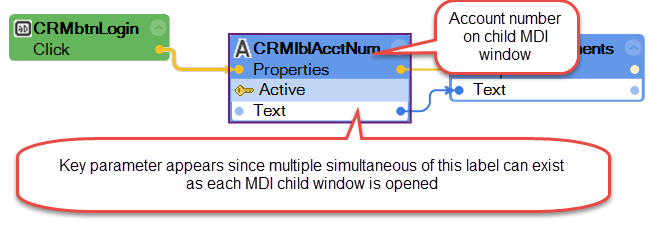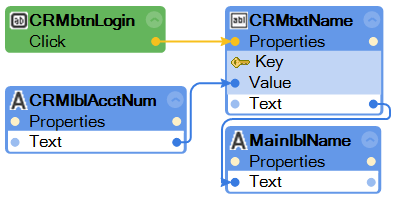Identifying Targets on MDI Child Windows
When connecting the data path between properties where the context changes or does not exist, Studio automatically displays the Key parameter. A Key parameter will be created for each parent object so depending on the control, multiple Key parameters may appear on the connection block. An example is shown below for a text box on an MDI Child window. The key parameter is displayed for the text box on the MDI Child window.

The Key parameter has the following options.
Active – The Active value identifies the instance of the control that is currently active. The Active value does not necessarily mean that the window that has been assigned that value is the only active window; it means that it is the only active window of the type being distinguished by the Key property.
Key – The GUID assigned to the control, or other set value. For more information, see Key Property.
None – Applies when only one instance of the control can occur.
This automation logic shows setting the key value to Active where the Designer chose to pass data from an Application Bar to the currently Active MDI child window's text boxes.

The following automation logic shows setting the key value to a specific instance of the MDI child window's text box.

After you make the first connection between objects on a MDI child window, you can continue the previous key setting for the rest of the connections. For more information, see Using the Upstream Key/Override Key.
Related information
